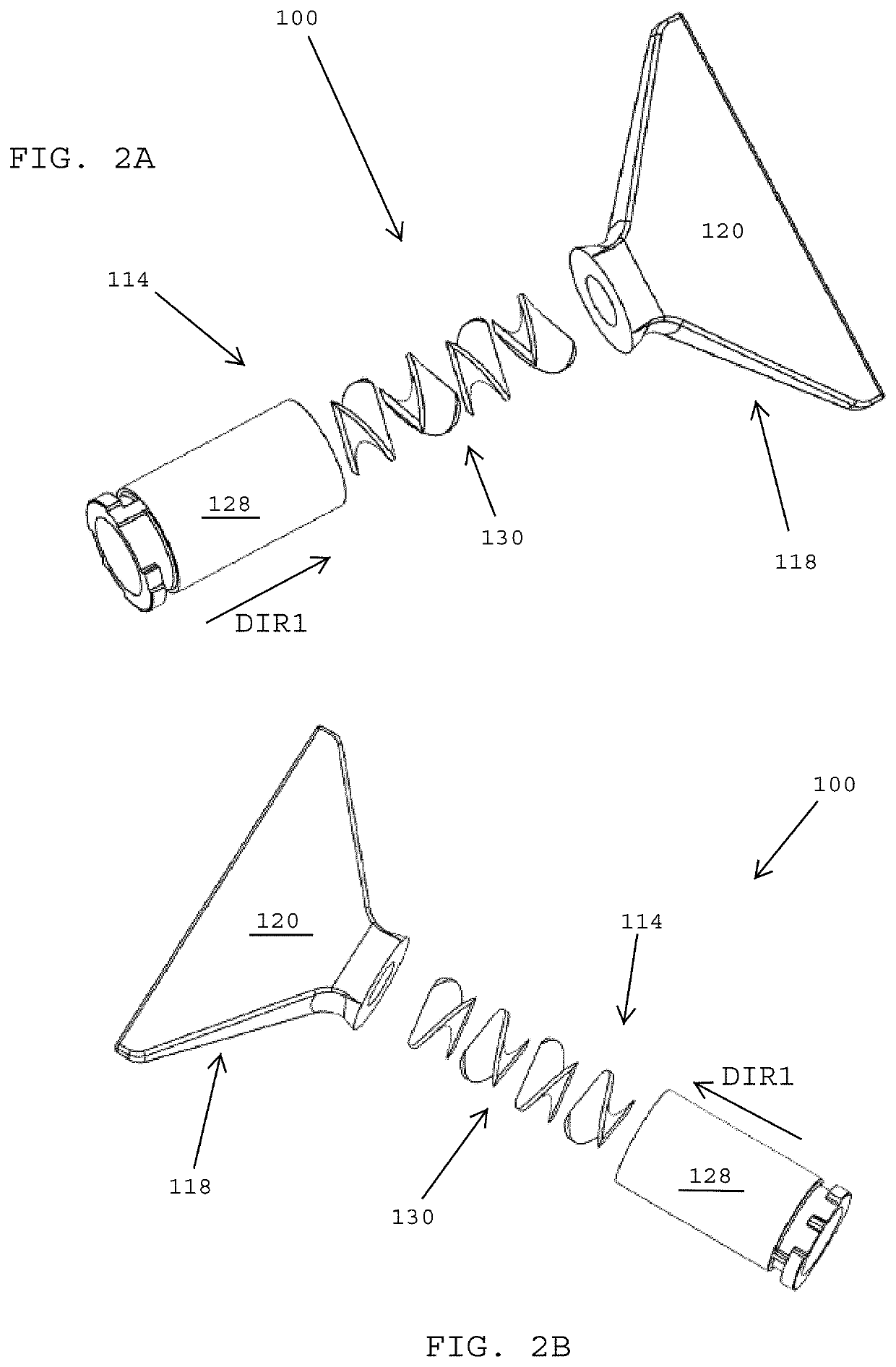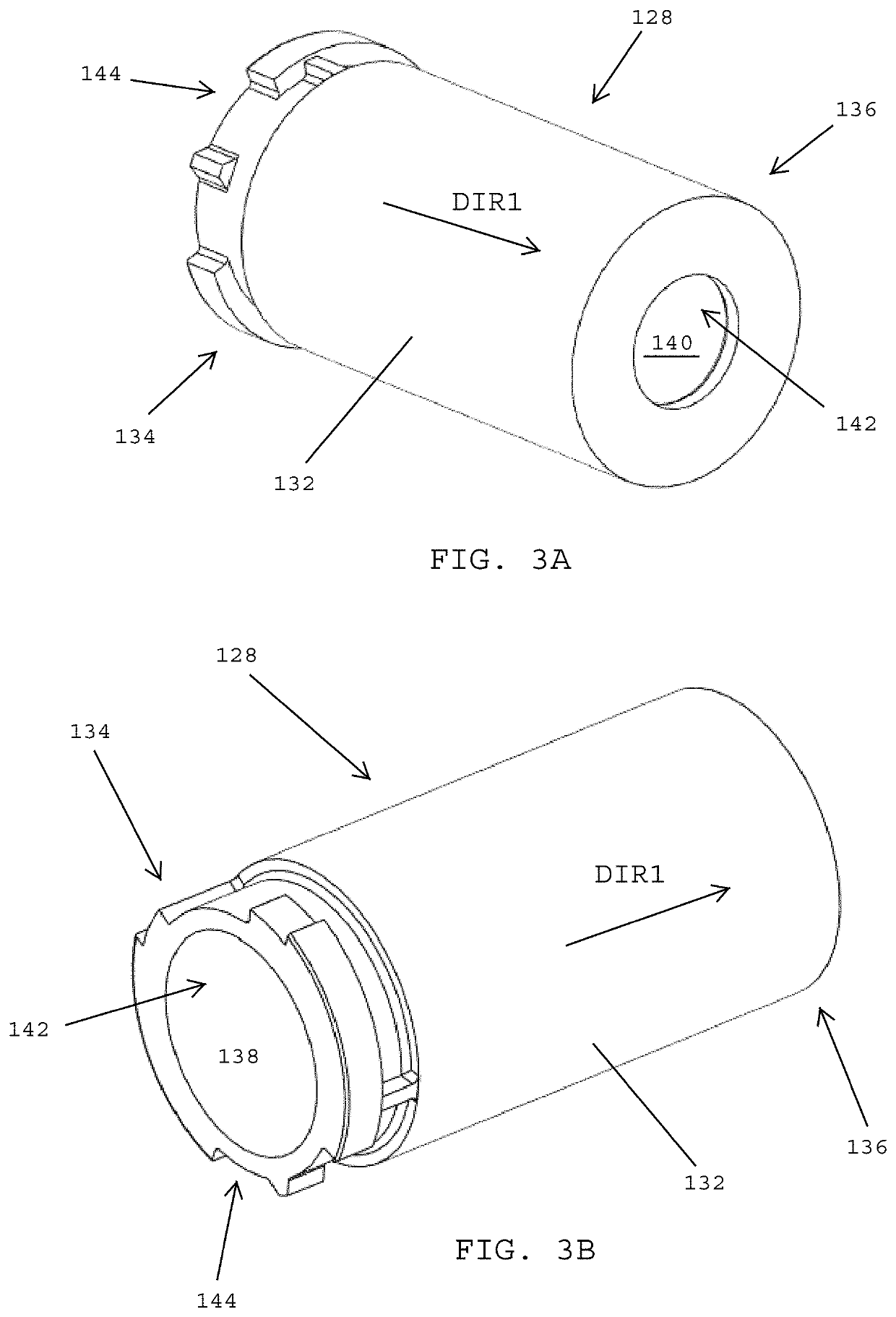Systems, devices and methods for dispensing and curing silicone based topical skin adhesives
a silicone based, topical technology, applied in the field of systems, devices and methods for dispensing and curing silicone based topical skin adhesives, can solve the problems of time-consuming, cosmetically unattractive wound closure marks, and additional trauma to the wound, and achieves the effects of less tissue reaction, improved flexibility, and convenient application
- Summary
- Abstract
- Description
- Claims
- Application Information
AI Technical Summary
Benefits of technology
Problems solved by technology
Method used
Image
Examples
example 1
Novel Platinum Catalyst (Synthesis Procedure)
[0128]44.50 g of Gelest SIP 6831.2 (2.2% platinum divinyl tetramethyldisiloxane complex in xylene, Karstedt catalyst) was mixed with 2 g of diethyl maleate for 24 hours at ambient temperature. Samples were taken out after 3 hours, 18 hours, and 24 hours for NMR testing and the NMR spectra for the 3 hour sample is shown in FIG. 12.
[0129]The formation of the novel catalyst is the evidence for scheme 1, which rests on NMR spectroscopic identification. Karstedt catalyst is known with a characteristic 195Pt signal at approximately −6111 ppm.
[0130]After 3 hours of mixing of the mixtures of Example 1, a new 195Pt signal at −6082 ppm was observed along with the original signal for the Karstedt catalyst at −6111 ppm as illustrated in the NMR spectra of this mixture at 3 hours in FIG. 12. The intensity of the new signal increases over time while the intensity of the Karstedt catalyst signal reduced at the same time.
[0131]In one embodiment, the cura...
example 2
Preparation of Silicone-Based Topical Skin Adhesive
[0132]In general and similar to most of commercially available platinum cured silicone materials, the silicone-based topical skin adhesive is delivered in a two-part kit by mixing equal volumes of the Part A and Part B components.
[0133]As an overview, vinyl terminated polydimethylsiloxane is mixed with Platinum tetramethyldivinyl disiloxane diethyl maleate catalyst, silica particles and optionally aliphatic organic solvent using a high-speed mixer to form part A of the kit. Vinyl terminated polydimethylsiloxane were mixed with polymethylhydro-co-polydimethylsiloxane cross linker, silica particle and optionally aliphatic organic solvent using high speed mixer to form part B of the kit.
[0134]Equal amounts of the two-part kit were mixed using a static mixer and then spread onto the surface of a substrate, such as skin. The mixture of the two-part kit cured within 5 minutes at body temperature as determined by the loss of stickiness or ...
example 3
Preparation of Silicone-Based Topical Skin Adhesive Using Commercial Silica-Containing Silicone Raw Material
[0137]Part A. 90 g of Elkem 44 experimental base (containing vinyl terminated polydimethyl silicone base polymer and fume silica particles) was mixed with 4.72 g of the resulting catalyst of Example 1, 9.0 g of low molecular weight vinyl terminated polydimethyl silicone base polymer (Gelest DMS V21) and 26 g of hexane using a high-speed centrifugal mixer (FlackTek DAC150 FV-K) at 3470 rpm for 5 minutes.
[0138]Part B. 81 g of Elkem 44 experimental base (containing vinyl terminated polydimethyl silicone base polymer and fume silica particles) was mixed with 8.1 g of polymethyl hydro siloxane cross linker (Gelest DMS H991), 2.7 g of SiH terminated polydimethylsiloxane chain extender (Gelest DMS H21) and 10.2 g of hexane using a high speed centrifugal mixer (FlackTek DAC150 FV-K) at 3470 rpm for 5 minutes.
[0139]Control Example: Control Example Without Silica Bonding Agent and Using...
PUM
| Property | Measurement | Unit |
|---|---|---|
| viscosity | aaaaa | aaaaa |
| viscosities | aaaaa | aaaaa |
| curable composition | aaaaa | aaaaa |
Abstract
Description
Claims
Application Information
 Login to View More
Login to View More - R&D
- Intellectual Property
- Life Sciences
- Materials
- Tech Scout
- Unparalleled Data Quality
- Higher Quality Content
- 60% Fewer Hallucinations
Browse by: Latest US Patents, China's latest patents, Technical Efficacy Thesaurus, Application Domain, Technology Topic, Popular Technical Reports.
© 2025 PatSnap. All rights reserved.Legal|Privacy policy|Modern Slavery Act Transparency Statement|Sitemap|About US| Contact US: help@patsnap.com



